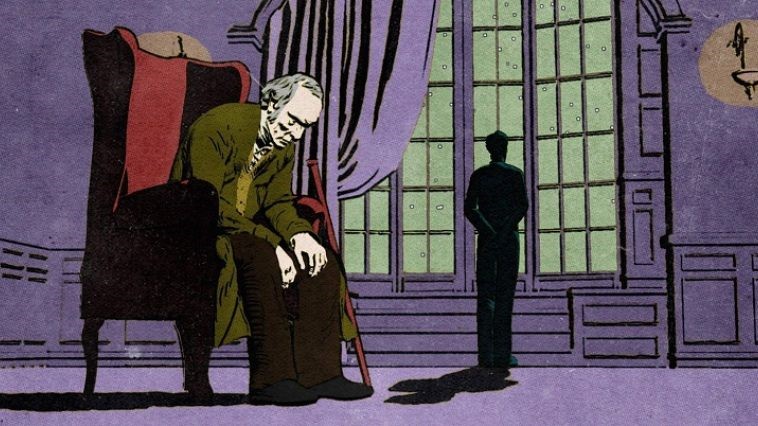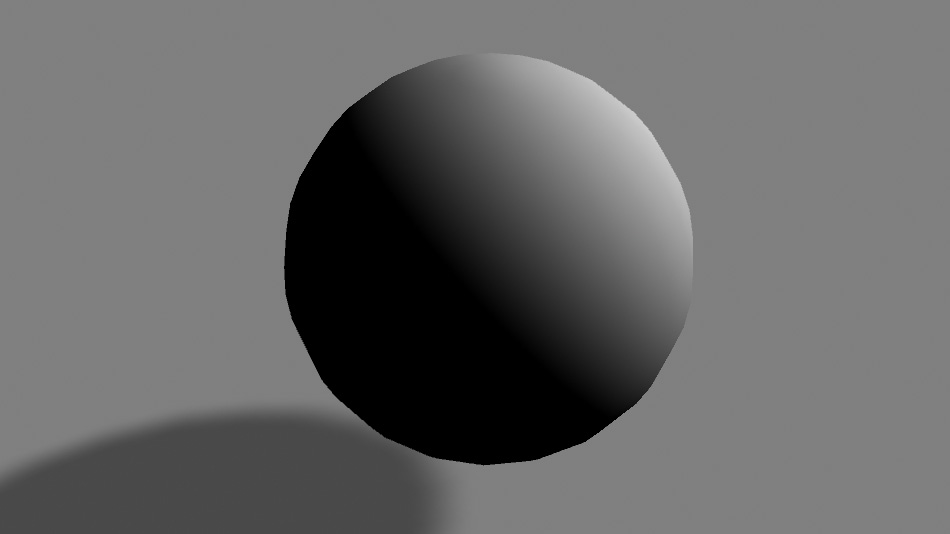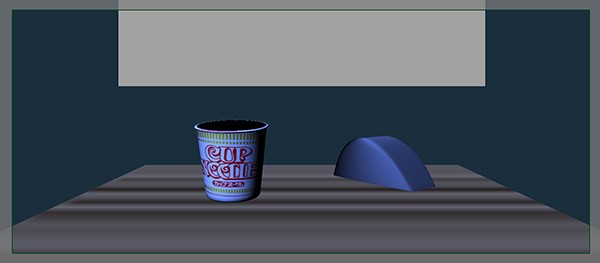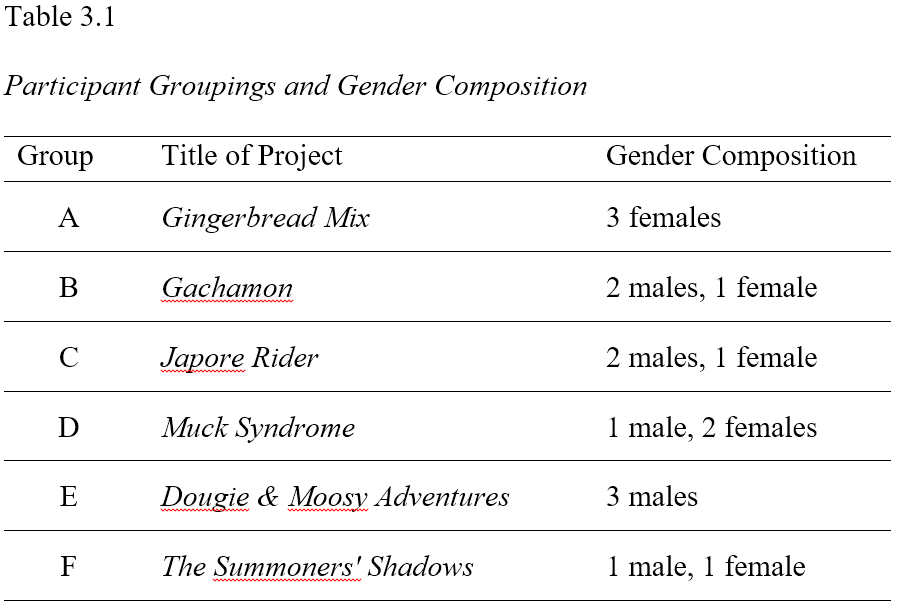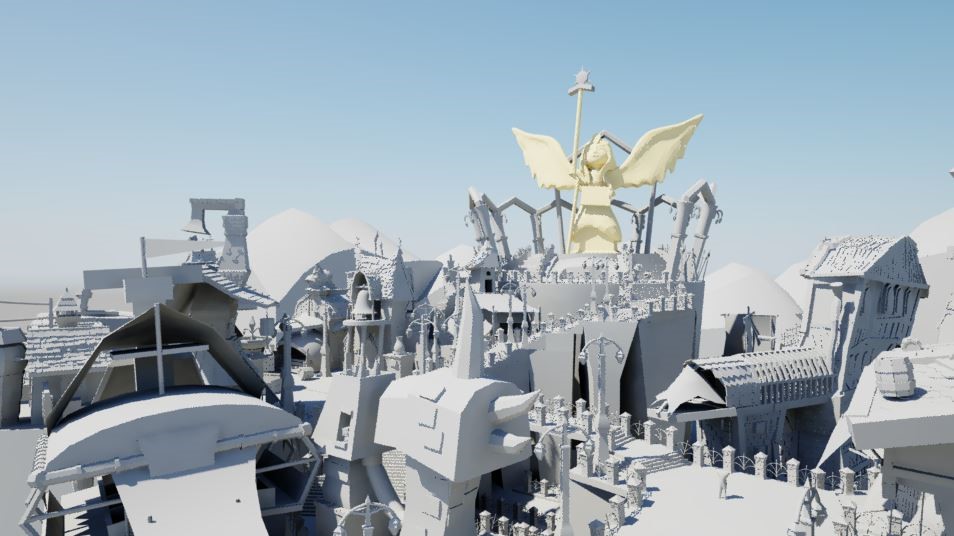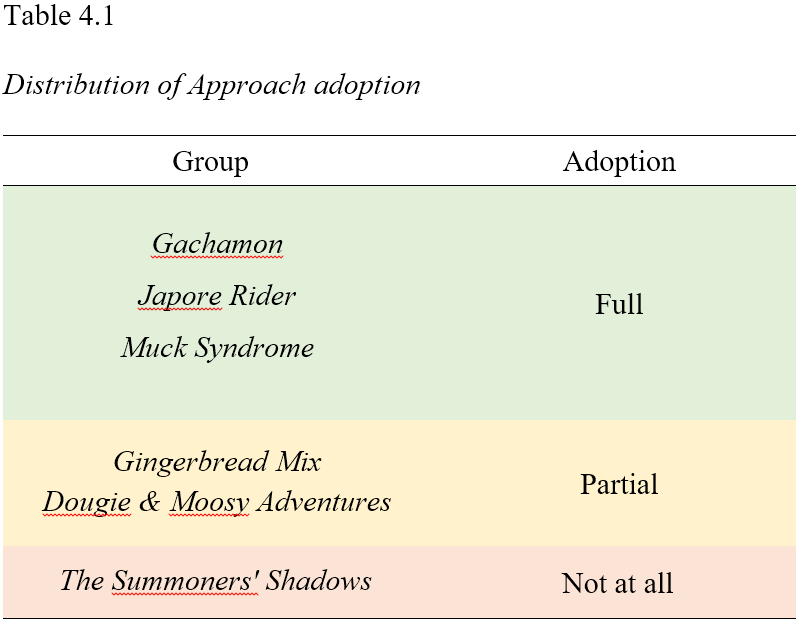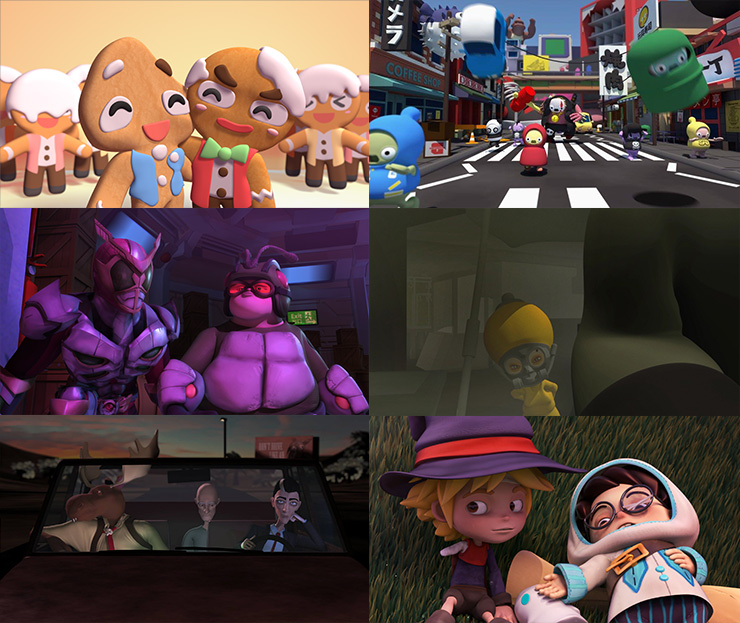Painting is a mode of pictorial expression that has spanned centuries. One can speak of the Impressionist or Baroque as recognizable styles in painting. In stark contrast, 3D Computer Graphics (CG) was only introduced in the 1970s by engineers from Pixar (Bendazzi, 2016, p. 17). When speaking about recognizable styles in 3D CG, one may find it hard to identify and differentiate unique categories. The “photorealistic” (Loh, 2017, p. 21) style of Toy Story (Lasseter, 1995), the first 3D animated feature film, is possibly the dominant style in the global contemporary animated cinema.
An artist expresses his or her ideas through the style created or employed in the work. Style, defined as the unique “manner” (Walter, 1987, p. 73) of appearance, is the way in which an artist depicts, beautifies, allures or articulates emotion (Gombrich, 1977, p. 101). Loh (2017) highlighted that the relationship between the medium and technique is key to understanding an animator’s style. Thus, the ability to communicate and express through 3D animation is dependent on the way a 3D software is being utilized.
MAYA is a 3D software used by students of the 3D animation programme at LASALLE College of the Arts to express their ideas. It allows digital animation to be created in virtual space, similar to how puppets are animated in the physical world. Here, a virtual character or prop known as an ‘asset’ is manipulated through several processes. As described by its creator Autodesk (Maya Help, 2017), the first step begins with sculpting the model of the asset. Next, the asset’s surface is digitally flattened through a process called UV unwrap, similar to how an animal is skinned to produce leather hide. Subsequently, colour is applied to the flat surface in a process known as texturing. Multiple assets are then compiled in a single scene to set up lighting. Finally, the animated sequence is produced through the software’s rendering module, ready to be watched on the screen. These are illustrated in Figure 1.1 through the making of Lak Boh Ki (Ang, 2016), an animated film produced with MAYA in the photorealistic style.
Figure 1.1. The 4 main processes involved in the creation of 3D animation – Modeling, texturing, lighting and rendering. © 2016 by Ang. Reprinted with permission.
The visual style of an animation is not necessarily confined to photorealism if an animator chooses to experiment with software techniques unconventionally (Loh, 2017, p. 61). As Katatikarn and Tanzillo (2017) mention, the software is merely a tool, not a limitation (p. 23). Garcia’s (2015) Extraordinary Tales employed the style of the 1950s full-colour comic in one of its segments (see Figure 1.2). 5 Shades of Solitude (Ang, 2015) adopted a painterly style in the opening sequence (see Figure 1.3). These examples of non-photorealistic rendering (Al-Rousan, Sunar, Kolivand, & Alhajhamad, 2016) indicate the vast possibilities of expression in 3D animation.
Figure 1.2. Still image illustrating a 1950s full-colour comic style from Extraordinary Tales. © 2015 by Garcia. Reprinted with permission.
Figure 1.3. Still image illustrating a painterly style from 5 Shades of Solitude. © 2015 by Ang. Reprinted with permission.
Statement of problem
Figure 1.4 below provides four examples of animated films produced by 3D students in the animation programme from recent years. The style in these examples is recognizably photorealistic and demonstrates a specific manner of shading known as Lambertian, defined as a perfect matte surface (Basri & Jacobs, 2003). Figure 1.5 demonstrates a sphere with the Lambertian shading that can be found in almost every object in the examples.
Figure 1.4. Still images from films by LASALLE students. From top left: Avarna (Santoso, 2013), Aisles of Adventure (Hong, 2016), Ava (Ho, 2016), A Little Too Much (Hyaning & Sudarman, 2016). Reprinted with permission.
Figure 1.5. Image of a sphere demonstrating Lambertian shading rendered from MAYA.
The conventional processes of MAYA may be a key hindrance to stylistic exploration in students, resulting in the homogeneity of visual style produced in the work. This is because MAYA is specially designed by Autodesk for industry production (Loh, 2017, p. 26). Companies such as Lucasfilm and Dreamworks make use of the processes described by Autodesk to distribute specialized tasks to different departments in order to achieve productive efficiency (Christensen, 2015; Loh, 2017). A character may be separated into assets such as the head, arms and clothing, each to be textured by a different artist before being combined for lighting (Tarantini, 2012, p. 260). The art department ensures the consistency of style in the entire process (Loh, 2017, p. 18). However, in a classroom context, texturing each asset in isolation conceals awareness of the overall visual design from students in the absence of an art department. The student sticks to the default MAYA Lambertian shading as a result. An “aesthetic limitation” (2017, p. 9) is imposed, leading to the phenomenon of stylistic homogeneity in student portfolios.
This phenomenon qualifies as a problem for two reasons. Firstly, Ackerman (2001) attributes style to “a class of related solutions to a problem” (p. 296). If an institution produces limited response to a challenge, it is considered “inflexible” (Steier, 2005, p. 44) in the cybernetic sense and represents low levels of learning (Bateson, 2000, p. 293). Schön (1987) considers the students to have followed “unitary procedures” (p. 169) – fixed steps without incorporating the overall design. The phenomenon therefore does not reflect well on a student’s learning.
Secondly, stylistic homogeneity suggests a lack of creativity in students. Stylistic development is not just an advancement of skill, but an expanded way of viewing the world and an indication of the artist’s creativity and imagination (Gombrich 1977, p. 10; Smith 2001, p. 214). Eisner (2002, p. 242) concurs that unfamiliar attitudes and the process of developing imagination in students are essential goals for art educators. Therefore, the lack of stylistic exploration is a major concern echoing a lack of creative and critical thinking in students.
Statement of research question
The core concern of this study is that the students’ ability to express their ideas through the medium of 3D animation may be curbed by the software processes. The study seeks to design a revised approach to the software in order to induce opportunities for stylistic exploration in the students’ work. In doing so, this study aims to discover possible answers to the following questions: What is the relationship between software processes and the student’s ability to explore visual style in 3D animation? How will the diversity of style in students’ work be affected if they were to adopt a revised approach to the software?
Literature Review
Parallel research in 3D animation
Discussion of Animation Style. Carter (2016) underscores the need to reexamine the relevance of past models to the style of animation in contemporary times. Paul Wells’s list of seven criteria defining “orthodox” (1998, p. 35) animation is employed by Carter in an attempt to analyze the style of several animated films. One of the criteria of “orthodox” animation is a unity of style, while an “experimental” (p. 35) animation demonstrates stylistic diversity. This argument outlines the potential outcome of this study – the departure of stylistic homogeneity representing an advancement of the approaches in the medium, which is recognized as “developmental” (p. 35).
Additionally, Carter utilized the “map of aesthetic possibilities in comics” by McCloud (1994, p. 50-57) and “model of distance” by Flueckiger (2008, p. 42) to chart the range of possible animation styles. He stressed that according to Bishko (2007), the alignment of style with the animated content is imperative to the authenticity and believability of characters in the film (Carter, 2016, p. 205). Merging the two arguments, stylistic exploration is not only achievable, but crucial to the expression of ideas within the medium. These concepts provide theoretical support for this study.
Problems with 3D Software. Loh (2017), a media researcher and software developer in the field of CG, identified a problem with 3D software in his master’s thesis – particularly their non-intuitive mouse and keyboard input interface. These interfaces are hypothesized to impose “aesthetic constraints,” resulting in a lack of novel applications of the software (p. 9). This means that the software’s “mechanical processes” amplify the separation between the work of art and the student (Aboalgasm & Ward, 2014, p. 3689). Loh highlighted that according to Power (2009), 3D software has excessively demanded programming capabilities on top of art and design skills from animators. The problem is similarly echoed in other studies: Kyto et al. (2017) found that mouse clicks consumed the majority amount of time in animation production which could have been spent on artistic tasks such as digital sketching and painting; Kuo and Chang (2013) discovered that the complexity of a commercial game engine is a learning obstacle for game design students. The ability to explore design and storytelling through the medium is thus impeded by these additional demands, validating the significance of this study.
Loh addressed the problem by designing an alternative tool called Anisketch which draws upon the aesthetics of calligraphy. He enrolled in Chinese calligraphy lessons to comprehend the relationship between brushstrokes and movement in animation (p. 10). The experience helped to inform his design process. This study could mimic Loh’s methodology by referencing the aesthetics of painting – a medium with known stylistic diversity – for the design of a revised approach in MAYA.
Painting-inspired approach
Ng (2016) discussed a common issue encountered by students based on his experience as a painter – they tend to overlook the importance of the overall picture plane design and pay more attention to the rendering of each isolated object. In MAYA, assets are also textured individually without vision of the whole pictorial design. Both issues are therefore similar, revealing that Ng’s theories about painting could hold the key to a revised approach of this research.
According to Ng, visual design involves the arrangement of shape and colour (p. 43). Ng also believes that planning the tonal structure – the arrangement of light and dark shapes – is an effective visual design approach in painting and should be decided prior to colours (p. 51). In the context of MAYA, shape is the result of light and shadow, while colour is applied by texturing. Lighting (shape) should therefore precede texturing (colour). It is proposed that the approach is revised as seen in Table 2.1, where lighting comes before texturing.
When a student does lighting, every asset in the scene is placed in relation to one another. Once the shape design is composed, they are forced to consider colours relative to every asset in the rendered image when they texture. They can then make informed adjustments, mimicking the process of painting on a canvas to compose the image. Unlike the conventional approach, the decisive texturing process gives the students liberty to achieve a different form of shading if they wish to. For example, in Figure 2.1 below, the cup noodle and clock are textured with a bluish-purple hue in painterly strokes after lighting the scene. The colour combination suggests a cold and depressed emotion. On the other hand, Figure 2.2 shows the same scene’s work-in-progress if the objects were textured in isolation prior to lighting. A bluish light is casted to establish the same mood, but the Lambertian shading on the objects remains apparent. The revised painting-inspired approach is therefore the proposed intervention in this study.
Figure 2.1. Image of a work-in-progress screenshot in MAYA for a scene in 5 Shades of Solitude using the revised approach. © 2015 by Ang. Reprinted with permission.
Figure 2.2. Image of a work-in-progress screenshot in MAYA for a scene in 5 Shades of Solitude using the conventional approach. © 2015 by Ang. Reprinted with permission.
Parallel research in other fields
Type of Instruction. In Ruscio and Amabile’s (1999) research, 82 students at Brandeis University were tasked to create a free-standing structure using a set of materials provided. The students were randomly placed into three groups of equal size: The first group received no tutorial; the second group received a step-by-step algorithmic video tutorial; the third group received a loosely categorized heuristic video tutorial. The crafting process was recorded and different coders made ratings based on process and behaviour. Questionnaires were also handed out to the participants at the end of the task to gather feedback about the instructions. It was found that algorithmic instruction hindered creative performance, while heuristic instruction encouraged exploratory solutions. If the revised approach in this study represents a departure from the algorithmic nature of the conventional approach, it may match the versatility of the heuristic instruction to increase exploratory behaviour in students. The use of different assessors in Ruscio and Amabile’s research helped to reduce bias, while the questionnaire serves to be an effective avenue for qualitative feedback. Both act as additional sources of data for triangulation (Power & Naysmith 2005, p. 27) which can be employed in this study.
Analysis of Portfolio. A set of criteria capable of analyzing the level of stylistic exploration is needed in this study. Lindström (2008) introduced a framework of assessing creativity in visual art capable of objectively assessing both process and product. He proposed a set of eight criteria:
1. Visibility of intention
2. Colour, form, and composition
3. Craftsmanship of materials and technique
4. Investigative work
5. Inventiveness
6. Ability to use models
7. Capacity for self-assessment
8. Overall judgement by teacher
Each criterion is governed by a set of detailed rubrics so that scores can be recorded on a 12-point Likert scale. 458 primary and secondary school students were assigned a project themed “divergent nature” that involved making a portfolio containing sketches, logbooks and videotape interviews (2008, p. 91). Class teachers and co-assessors from different schools rated the portfolios. They were found to largely tally on grades, revealing the potential validity of the criteria.
In order to adapt the criteria for the assessment of portfolio in this study, some of the criteria need to be edited or removed. Capacity for self-assessment was dropped due to the short duration available in this study to reveal any substantial reflective thinking in the student. Overall judgement was also removed as this study does not attempt to grade the student’s performance. The final set of criteria, along with each rationale, was proposed according to Table 2.2.
Research Method
Scenario
The research takes places at LASALLE College of the Arts. Seventeen students between the ages of 22 and 25 in their final year of the BA (Hons) Animation Art programme were involved in the action research. Nationalities of the students include Singaporeans, Malaysians, Indonesians and Indians. The students were made up of 9 male and 8 female students who have been grouped by their project supervisor according to Table 3.1 in order to fulfill the requirements of the final year of study – to produce an animated short film between 3 to 5 minutes. These students possessed at least 2 years of experience with the MAYA software and have made at least 2 narrative 3D animated short films in the past years of study.
Each student worked on a designated PC of their own in a computer lab that has MAYA installed. They also had access to a range of Adobe products such as Photoshop, After Effects and Premiere to compile or further manipulate the images rendered from MAYA.
Methodology
According to Creswell (2014), exploratory research that engages a small but focused convenience sample should adopt a qualitative or mixed methodology. These types of methodology allow for qualitative feedback that serves to improve the design of the intervention whilst providing quantitative answers to the research questions. This study qualifies as exploratory in nature because the design of the intervention may be subjected to variations due to the inherently different projects undertaken by the students. A convenience sampling method was used due to the small size of student numbers within the reach of this study. Quantitative results were employed to find out the statistical relationship between software approaches and stylistic diversity, as well as other emerging outcomes based on the assessment criteria.
Method
The study involved an eight-week intervention followed by a series of post-intervention data collection processes. The intervention took place eight weeks into the second semester of study. Each group of students would have completed the modeling of every asset necessary in the production of their short film during this period in the semester. With each group embarking on the texturing and lighting stages, the timely intervention began with a group mentorship session in Week Eight where the revised approach was introduced to the students. In addition, each group of students received a customized demonstration of the revised approach using the assets made by the group itself to show how the approach may be useful to the visual development of their film. An example demonstrated to the group The Summoners’ Shadows is shown in Figure 3.1, which depicts a lighted scene with only one statue textured with yellow:
Figure 3.1. Screenshot of a demonstration for the group The Summoner’s Shadows using the assets from the group.
Subsequently, each group of students was given one week to refine and experiment with the revised approach. Consultations were conducted on weeks Nine and Ten to follow up on the group’s progress and to allow the students to ask questions. Weeks 11 to 15 were scheduled for the students to complete their film. The students submitted their work on the first day of week 16. Throughout the eight weeks of intervention, a journal was used to record the observations of the group’s progress, intentions and challenges communicated through the consultations. Table 3.2 shows a summarized schedule of the intervention period.
The post-intervention process involved an assessment of the images submitted. Two images per group were used for the assessment – one pre-intervention and one post-intervention visual look of the film. Each assessment criterion established in Table 2.2 carried a 4-point rating scale. Each rating has an attached rubric (see Table 3.3) to aid the assessor. 3 assessors with 5 to 25 years of teaching experience from the programme assessed the work individually.
The second post-intervention task involved a questionnaire for the students. The students were instructed to complete the questionnaire as a group so as to allow discussion among group members who may have contributed disparately towards the visual development of the project. The questionnaire contained a sample image demonstrating the proposed approach as a visual reminder, followed by mandatory fields including the title of the project and whether they have used the revised approach for their film. An optional field allowed the students to fill in their reference style if they had one prior to the intervention. The set of remaining questions were asked based on whether the group adopted the revised approach fully, partially or not at all, and are rationalized in Table 3.4. The questions were also designed to be able to compare against the set of assessment criteria so as to determine the student’s perspective of the approach.
Ethical Considerations. Before the start of intervention, it was made known to the students that the revised approach was part of an action research undertaken to fulfil the requirements of a module in the MA Arts Pedagogy and Practice programme at LASALLE College of the Arts. During intervention, care was taken to ensure that the students have absolute freedom to choose not to adopt the revised approach for their project, and doing so will not affect the official assessment of their work. Students could also choose to postpone a consultation session should they be behind schedule in other aspects of their project. Finally, the students were informed that they could withdraw the rights of this study to publish their work at any point of time during the research.
All students were referred to anonymously in this study. They were asked for consent to publish the titles and images belonging to the project. Care was taken to remind them about the possible risks of the disclosure of identity should the students choose to publish their work along with their names on the internet.
Data Collection
This study hopes to increase the credibility of data through triangulation, defined as sourcing data from multiple perspectives (Power & Naysmith, 2005, p. 27). Therefore, 5 steams of data were sourced as follows:
1. Visual development images before intervention from students
2. Visual development images after intervention from students
3. Assessment ratings of items 1 and 2 by other animation lecturers
4. Post-intervention questionnaire responses by students
5. Weekly consultation journal by researcher
Items 1 and 2 were collected as JPEG images through an online file-sharing platform determined by the students. Item 3 and 4 were collected using Google forms administered online. Item 5 was typed on a word document. Items 3, 4 and 5 were used for triangulation based on specific coding elaborated in the next chapter.
Results & Data Analysis
Results
Five out of six groups adopted the revised approach in the production of their short animated film. Out of these, three groups adopted it fully, while two groups used it partially for certain scenes, as seen in Table 4.1. Figure 4.1 depicts the images that were developed before the intervention, while Figure 4.2 depicts the images developed after the intervention.
Figure 4.1. Still images of pre-intervention visual development. From top left: Gingerbread Mix, Gachamon, Japore Rider, Muck Syndrome, Dougie & Moosy Adventures, The Summoners’ Shadows. Reprinted with permission.
Figure 4.2. Still images of post-intervention visual development. From top left: Gingerbread Mix, Gachamon, Japore Rider, Muck Syndrome, Dougie & Moosy Adventures, The Summoners’ Shadows. Reprinted with permission.
Assessment ratings of the student’s pre-intervention and post-intervention work from the 3 assessors were recorded and tabulated. 78.33% of the ratings were found to be consistent among at least 2 assessors. In order to mediate any inconsistent ratings, the median was taken when 3 assessors did not agree with one another, while the mode was taken when only 1 assessor rated differently.
It was observed that there was an improvement in ratings across all assessment criteria for all groups that adopted the revised approach fully or partially, as seen in Figure 4.3. The “ability to use reference” witnessed the most significant increase, followed by “colour, shading, style” and “investigative work/inventiveness”. The group that used the conventional approach saw a drop in ratings for “visibility of intention” and “investigative work/inventiveness”, as shown in Figure 4.4.
Figure 4.3. Total sum of ratings across the 5 groups who adopted the revised approach before and after intervention.
Figure 4.4. Ratings before and after intervention for The Summoners’ Shadows who did not adopt the revised approach.
In order to triangulate data, the questionnaire responses and journal observations were coded according to the following criteria:
1. Intention (matches visibility of intention)
2. Exploration (matches investigative work/inventiveness)
3. Composition (matches colour, shading, style)
For example, if a student answered “I am somewhat able to communicate my work as intended,” equivalent to the second-best choice out of 4 possible choices, the response is given a rating of 3 in a 4-point scale for “intention.” If keywords like “communicate,” “intend” or “satisfied” appears in the journal entry, a rating will be given based on judgment of the group’s consultation experience for the same criteria of “intention.”
The data presented in Figure 4.3 was found to tally with the questionnaire responses and journal observations on “intention”. Assessors, students and researcher concurred with high ratings of 3 or 4 – the ability to communicate work as intended using the approach, as shown in Figure 4.5.
Figure 4.5. Ratings for “Intention” for each group from different data streams.
For “exploration,” there were some discrepancies. Gingerbread Mix and Dougie & Moosy Adventures were perceived to exhibit some exploration by assessors and students but revealed to be limited in exploratory efforts by the researcher. Gachamon did not appear to be exploratory to assessors but students and researcher felt otherwise. Japore Rider was rated lower by the researcher, while assessors and students believed in presence of exploration in the work. These are summarized in Figure 4.6. The change in “exploration” observed through the assessors and researcher over the 8-week period are shown in Figure 4.7, depicting a rise in exploration of style for all groups except Gachamon who remained the same.
Figure 4.6. Ratings for “Exploration” for each group from different data streams.
Figure 4.7. Change in rating for “Exploration” for each group from the assessment and journal data streams.
For “composition”, there was no 4-point rating through the questionnaire as the students responded with a binary answer to the question. In this case, a rating of 4 was given if the student checked “I’m able to compose my shots more decisively”, or 1 otherwise. From Figure 4.8, it can be seen that all groups reflected a high rating for the ability to compose the image, except for Muck Syndrome who encountered difficulties with composition.
Figure 4.8. Ratings for “Composition” for each group from different data streams.
Two other aspects of the revised approach emerged from the questionnaire – efficiency of approach and time constraints due to actual deadlines. There were vastly mixed responses about the approach’s productive efficiency. All groups who used the revised approach, with the exception of Gingerbread Mix, faced the challenge of time constraints as a result of additional experimentation.
Data Analysis
From the data presented, not all groups have chosen to fully adopt the approach. These are the groups that have decided upon their stylistic intentions in the early stages of the intervention. The research journal showed that they were comfortable with the photorealistic style to express their ideas. Loh (2017) suggests that this may be due to the needs of the architectural, medical and film industries to simulate “visual reality” (p. 13), which led researchers of the medium to concentrate on developing photorealistic imagery. This means that the high tendency to adopt a photorealistic style is influenced by the high demands of parallel industries. Furthermore, Ruscio and Amabile (1999) explain the concept of “functional fixity” (p. 252) – defined as the dilemma encountered when trying unorthodox methods – as well as “cognitive rigidity” (p. 252) – the reluctance to discover alternative solutions to a problem. These concepts not only account for the lack of full adoption of the revised approach, but explain the lack of willingness to explore alternative styles.
While Figure 4.3 may paint a positive outcome of the revised approach, one may argue that the students have simply improved on all criteria due to the spending of an intensive amount of time and effort on visual development during this period. The revised approach may not fully account for improvements in stylistic exploration without the use of control groups as observed in Ruscio and Amabile’s (1999) research. Although the group who did not adopt the approach observed no improvement in all criteria (see Figure 4.5). This may be offered as a weak support for the positive outcome of this study.
The mixed perception of exploratory aspects of the work in Figure 4.6 may be due to competing interpretations of what constitutes stylistic exploration. To some people, a work may be considered stylistically exploratory if the choice of colours is unusual to them, regardless of the presence of Lambertian shading. In this situation, it may be more useful to note the positive change recorded in Figure 4.7, which suggest an overall increase in stylistic exploration. Also, the pre-intervention and post-intervention images contained varying objects and subjects which may have posed an issue with assessment.
The discrepancy observed by Muck Syndrome in Figure 4.8 may be due to a lack of members who are competent at colour composition, resulting in the isolated case of poor ratings and feedback. They reported difficulties with composition and design in the open-ended questions of the questionnaire. Thus, this discrepancy may be omitted in the conclusion.
The mixed opinions about efficiency revealed by the students can be attributed to the innately dissimilar nature of the projects. Some projects may find the revised approach inefficient if the lighting has to be changed for every shot in the film, while others may find the same lighting reusable throughout the film, depending on the placement of assets in the scene. The last observation about time constraints may be a substantial factor affecting the results in this study. The only solution to this issue might be an extended period of intervention.
Conclusion
In this study, the conventional processes of MAYA, originally meant for industrial production, is thought to have hindered the student’s capacity to explore alternative visual styles in 3D animation. The study attempted to find out whether there exist a relationship between software processes and stylistic exploration, and whether stylistic diversity might be encouraged through a painting-inspired approach to visual development in MAYA.
Taking inspiration from Ng’s (2016) theories about painting, a revised approach was proposed and introduced to 17 3D animation students over 8 weeks. It was found that the students who adopted the approach demonstrated different levels of stylistic exploration in their work. This indicates a positive relationship between software processes and stylistic exploration. They also became more confident in communicating their work as intended, composing their design, improving their techniques and adapting references for their work. However, the students reported mixed opinions about the efficiency of the revised approach towards production, which revealed the need to strengthen its design possibly through an experience-based study on larger number of participants.
With the limited number of participants and short duration of this study, there is still insufficient evidence to prove that stylistic diversity will be increased using the revised approach. Factors such as willingness to experiment and time constraints were major issues affecting the reliability of results in this study. Further research over a longer research timeline may be necessary. The need to address the students’ exploratory intend using other solutions may also be considered in subsequent research beyond this study.
Qing Sheng is currently an independent animation filmmaker in Singapore and teaches in the Animation programme at LASALLE College of the Arts. He holds a Masters of Arts in Arts Pedagogy and Practice from Goldsmith University (London).
References
Aboalgasm, A. S., & Ward, R. (2014). “The Strategies for Teaching Digital Art in the Classroom as a Way of Enhancing Pupils’ Artistic Creativity.” International Journal of Social, Behavioral, Educational, Economic, Business and Industrial Engineering, 8(11). Retrieved from http://eprints.hud.ac.uk/26310/
Ackerman, J. S. (2001). “Style.” In R. A. Smith (Ed.), Aesthetics and criticism in art education: problems in defining, explaining, and evaluating art (pp. 284-298). Reston, VA: National Art Education Association.
Al-Rousan, R., Sunar, M. S., Kolivand, H., & Alhajhamad, H. (2016).”Stylized Line Drawing and Shading Effects for Cartoon Rendering.” International Journal of Innovative Computing, 6(2), 14-18. Retrieved April 12, 2017, from http://kp.fsksm.utm.my/ijic/index.php/ijic/article/view/129/59
Ang, Q. (Director). (2015). 5 Shades of Solitude [Motion picture]. Singapore: LASALLE College of the Arts. Retrieved from https://vimeo.com/130537288
Ang, Q. (Director). (2016). Lak Boh Ki [Motion picture]. Singapore: LASALLE College of the Arts. Retrieved from https://vimeo.com/136796350
Astleitner, H. (2005). “Principles of Effective Instruction – General Standards for Teachers and Instructional Designers.” Journal of Instructional Psychology, 32(1), 3-8.
Basri, R., & Jacobs, D. (2003). “Lambertian reflectance and linear subspaces. IEEE Transactions on Pattern Analysis and Machine Intelligence, 25(2), 218-233. doi:10.1109/tpami.2003.1177153
Bateson, G. (2000). Steps to an ecology of mind. Chicago: University of Chicago Press.
Bendazzi, G. (2016). Animation: a world history (Vol. 3). Boca Raton, Florida: CRC Press.
Bishko, L. (2007). “The uses and abuses of cartoon style in animation.” Animation Studies, 2, 24-35. Retrieved from https://journal.animationstudies.org/leslie-bishko-the-uses-and-abuses-of-cartoon-style-in-animation
Carter, C. (2016). Animated Mise-en-scène and Aesthetic Harmony: An Expansion of the Traditional Principles of Animation to 3D Computer Animation (Unpublished doctoral dissertation). Queensland University of Technology. Retrieved April 7, 2017, from http://eprints.qut.edu.au/93800/
Christensen, R. (2015, December 26). Retrieved March 28, 2016, from https://www.youtube.com/watch?v=5CbG0d_tnSg
Eisner, E. W. (2002). The arts and the creation of mind. New Haven: Yale University Press.
Flückiger, B. (2008). Visual Effects: Filmbilder aus dem Computer. Marburg: Schüren.
Garcia, R. (Director). (2015). Extraordinary Tales [Motion picture]. Luxembourg: Mélusine Productions.
Gombrich, E. H. (1977). Psychology and the Riddle of Style. In Art and illusion: a study in the psychology of pictorial representation (5th ed.). Oxford: Phaidon Press, pp. 3-25.
Ho, G. (Director). (2016). Ava [Motion picture]. Singapore: LASALLE College of the Arts.
Hong, G. (Director). (2016). Aisles of Adventure [Motion picture]. Singapore: LASALLE College of the Arts.
Hyaning, J. N., & Sudarman, E. A. (Directors). (2016). A Little Too Much [Motion picture]. Singapore: LASALLE College of the Arts.
Katatikarn, J., & Tanzillo, M. (2017). Lighting for animation: the art of visual storytelling. Boca Raton: CRC Press.
Kuo, M., & Chuang, T. (2013). “Developing a 3D Game Design Authoring Package to Assist Students’ Visualization Process in Design Thinking.” International Journal of Distance Education Technologies, 11(4), 1-16. doi:10.4018/ijdet.2013100101
Kyto, M., Dhinakaran, K., Martikainen, A., & Hamalainen, P. (2017). “Improving 3D Character Posing with a Gestural Interface.” IEEE Computer Graphics and Applications, 37(1), 70-78. doi:10.1109/mcg.2015.117
Lasseter, J. (Director). (1995). Toy story [Motion picture]. Burbank, CA: Walt Disney Productions.
Lindström, L. (2008). “Understanding the Creative Mind: Portfolio Assessment in the Visual Arts.” In The 13th International Conference on Thinking Norrköping 3(21), Sweden: Linköping University Electronic Press, pp. 89-94. Retrieved January 27, 2017, from http://www.ep.liu.se/ecp/article.asp?issue=021&volume=1&article=012
Lloyd, P., & Jones, D. (2013). “Everyday creativity in design process.” Art, Design & Communication in Higher Education, 12(2), 247-263. doi:10.1386/adch.12.2.247_1
Loh, I. J. (2017). AniSketch: Alternative Aesthetics For Computer Animation Tools (Master’s thesis, Victoria University of Wellington, 2017). Wellington: The Library. Retrieved from http://researcharchive.vuw.ac.nz/xmlui/handle/10063/5643
Maya Help. (2017, February). Retrieved February 25, 2017, from http://help.autodesk.com/view/MAYAUL/2017/ENU/
McCloud, S. (1994). Understanding comics: the invisible art. Northampton: William Morrow Paperbacks.
Ng, W. (2016). Practical Applications of Color Theory & Design Concepts. Singapore.
Power, P. (2008). “Character Animation and the Embodied Mind—Brain.” Animation, 3(1), 25-48. doi:10.1177/1746847708088734
Power, R., & Naysmith, J. (2005). Action Research: A Guide for Associate Lecturers. Retrieved April 2, 2017, from http://www.open.ac.uk/cobe/docs/AR-Guide-final.pdf
Pringle, E. (2009, April 1). “The Artist as Educator: Examining Relationships between Art Practice and Pedagogy in the Gallery Context.” Tate Papers, (11). Retrieved June 6, 2016, from http://www.tate.org.uk/research/publications/tate-papers/11/artist-as-educator-examining-relationships-between-art-practice-and-pedagogy-in-gallery-context
Ruscio, A. M., & Amabile, T. M. (1999). “Effects of Instructional Style on Problem-Solving Creativity.” Ireativity Research Journal, 12(4), 251-266. doi:10.1207/s15326934crj1204_3
Santoso, N. (Director). (2013). Avarna [Motion picture]. Singapore: LASALLE College of the Arts.
Schön, D. A. (1987). Educating the reflective practitioner: Toward a new design for teaching and learning in the professions. San Francisco: Jossey-Bass.
Smith, R. A. (2001), Aesthetics and criticism in art education: problems in defining, explaining, and evaluating art. Reston, VA: National Art Education Association.
Steier, F. (2005). “Exercising Frame Flexibility.” Cybernetics & Human Knowing, 12(1-2), 36-49.
Tarantini, T. (2012). “Pictures that do not really exist: Mitigating the digital crisis in traditional animation production.” Animation Practice, Process & Production, 1(2), 249-271. doi:10.1386/ap3.1.2.249_1
Walton, K. L. (1987). “Style and the Products and Processes of Art.” In B. Lang (Ed.), The Concept of style. New York: Cornell University Press, pp. 72-103.
Wells, P. (1998). Understanding animation. New York: Routledge.
© Qing Sheng Ang
Edited by Amy Ratelle

